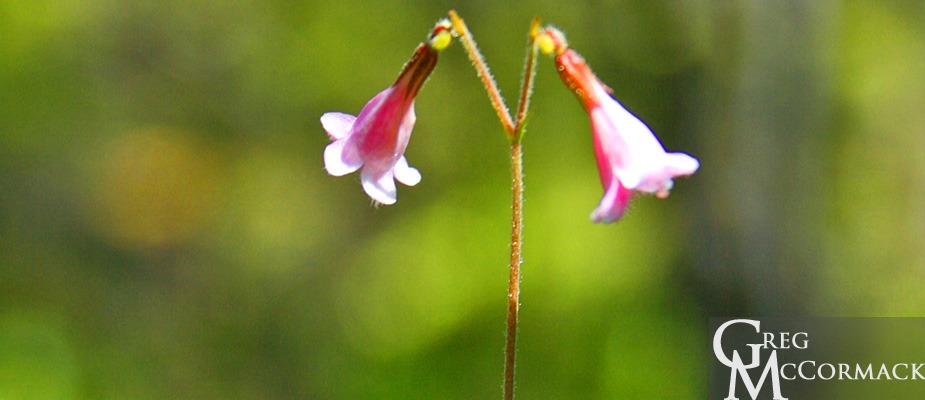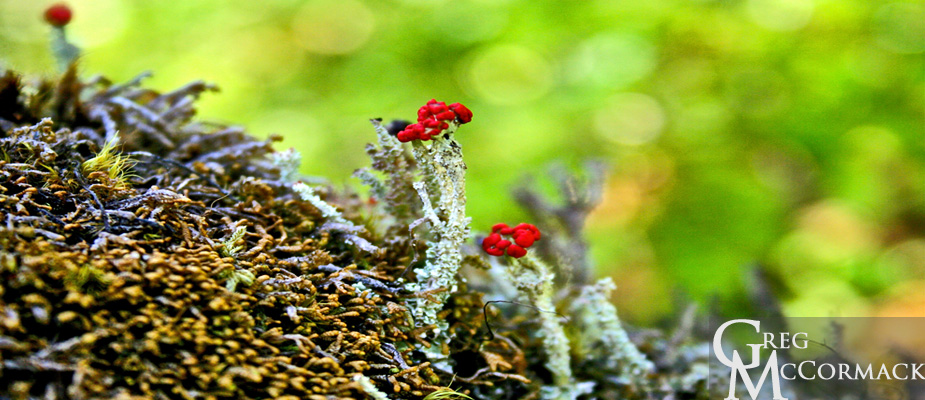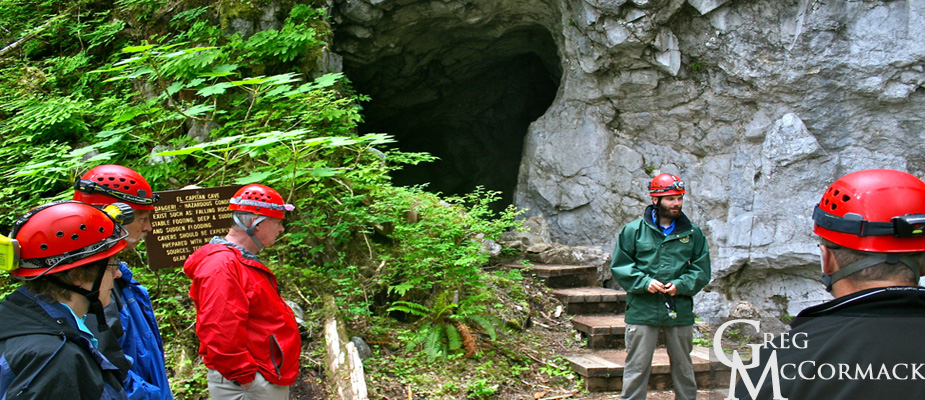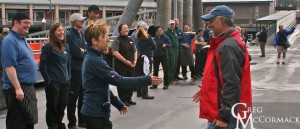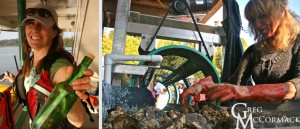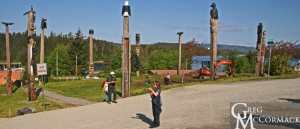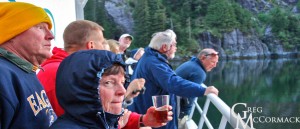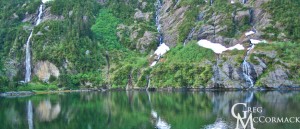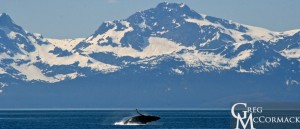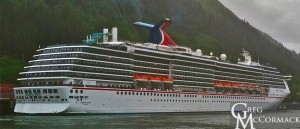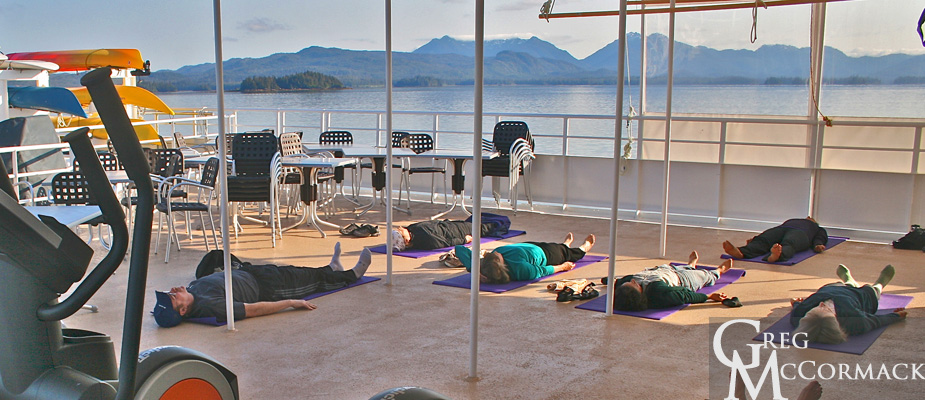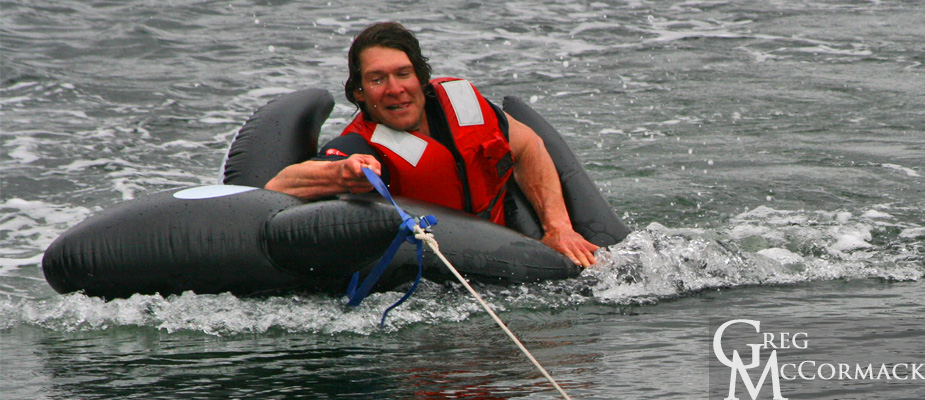Search results
Sunday | July 10
September 26, 2011 by admin
Filed under InnerSea Discoveries
El Capitan
“Everybody needs beauty as well as bread, places to play in and pray in, where nature may heal and cheer and give strength.” –John Muir “The Mountains of California”
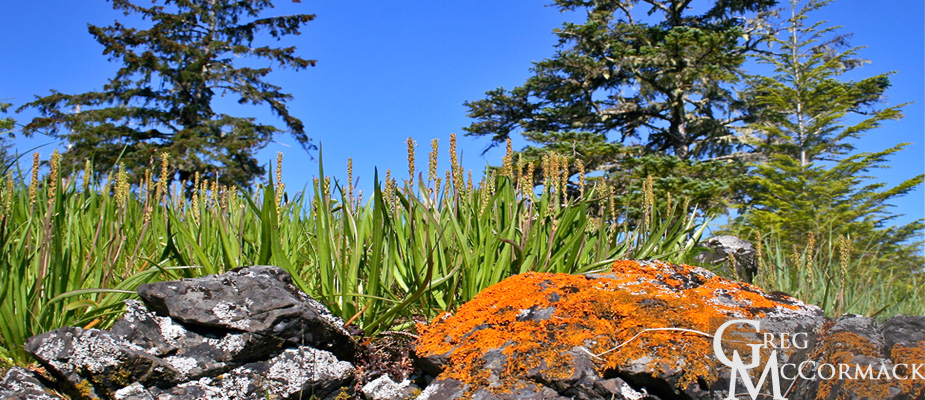
All of our guests are asked to go through our three “station rotation” trainings in kayaking, stand-up paddleboarding, small boat and bear safety.
Each “evolution” occurs in a different area of the ship (two in the lounge and one on the top deck).
After grabbing paddle jackets and depositing them in the lockers, adventure-seekers are ready for disembarking on our first full day of activities at Prince of Wales Island.
We anchor at the north end of El Capitan Passage where Dry Pass enters a bay approximately ½ mile wide by 3 miles long.
Despite the fact that there has been heavy logging in the past (clear cuts are visible along with a logging road on the north shore that leads to a small, private lodge), the place is peaceful and scenic.
My job this morning is to provide a “kayak clinic” for beginning kayakers out in the bay. I demonstrate paddling techniques, bracing, how to turn around, get the rudder up and down among other pointers.
“We could try the ‘Eskimo Roll’ if you’d like?”, I asked jokingly. The temperature of the waters here are in the high 40’s to low 50’s Fahrenheit, or about 10 degrees Celsius. If we were to practice rolling and submerging, we’d want to don dry suits.
Highlights along the shoreline include a Sitka black-tailed deer (doe with fawns) browsing on grasses above the beach wrack or strand zone, bald eagles at their nest, breaching salmon and best of all: Sunshine!
On our way back to the ship, I recruit other kayakers to help find macro-algaes, in particular the bull kelp. The pneumatocyst or air float can mimic the head of an otter, especially when there is a wind chop or swell on the sea surface. We find some un-attached Nereocystis leutkeana floating with its holdfast attached to a tiny rock. We haul it aboard and put it in a bucket for further examination later today.
In the afternoon I lead a less intense version of a forest walk that doesn’t include 367 steps up a steep hill to a cave.
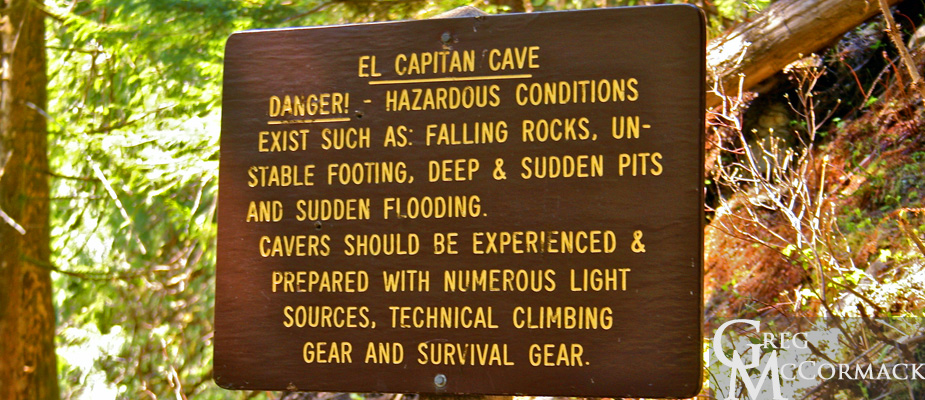
After my introduction explaining safety in bear country, I address my group of intrepid travellers with the theme for the day, one that has been a favorite of mine over the four decades that I’ve been leading interpretive walks:
“Folks, instead of hiking, we will saunter—serendipitously–along these Forest Service roads. Horace Walpole, a British writer in the mid-1700’s, wrote a fairy tale called the ‘Three Princes of Serendip’. They had a knack for the unexpected, for discovering things that they had no idea they’d find. So let’s use all of our senses and see what we might come across over the next 90-minutes.”
Our finds included the stinky raceme of the skunk cabbage, scatological findings from several mammals, squirrel pine cone middens, flowers, mushrooms and various birds that I identified “by ear”, amongst other delightful finds.
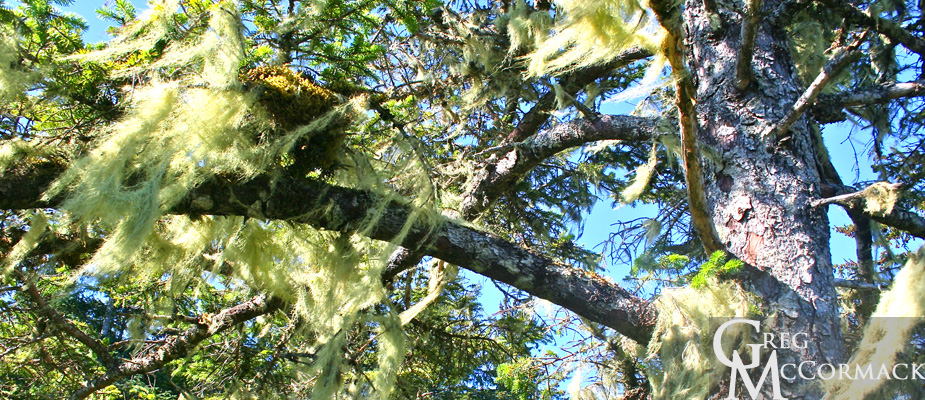
Back aboard, I give a talk entitled “The Multifarious Uses of Nereocystis leutkeana”, a demonstration of the marvelous seaweed called the “bull kelp”. There are a lot of histrionics involved, including audience participation and hand-held specimens.
Here’s a few of the highlights:
• Bull Kelp is an annual that can grow to 20 meters
• The range of this nearshore brown algae is from central California to Alaska
• The decimation of the (urchin-eating) Sea Otter by the Russians led to an increase in the herbivorous (kelp-loving) sea urchins and a subsequent decrease in kelp and what the kelp forest harbors, including many dozens of invertebrates and fishes
• Native American uses include food and medicine, and recreational uses including ceremonial speaking tube, musical instruments, siphoning hose, jump rope, lion tamer, target practice, etc.
I entertain folks by using a knife to cut the kelp specimens and volunteers entertain everyone by using the hollow stipe as a trumpet-like horn, bugling the announcement for dinner!
Sunday | June 26th
September 9, 2011 by admin
Filed under InnerSea Discoveries
El Capitan Passage, Caves and Oyster Pick-up
I lead a couple of groups along the U.S. Forest Service trail to the caves. This is a great area to explain the hallmarks of a temperate rainforest, such as the presence of Sitka spruce, nurse logs, a profusion of mosses and ephiphytes, among others. We look at signs of a second growth forest such as trees of the same age and height class that grow so thick that sunlight cannot penetrate the canopy to reach the forest floor. The lack of sunlight leads to a paucity of herbaceous and shrubby plants that provide habitat or browse for herbivores such as deer.
It is obvious when we make the transition into an old growth forest. We notice lots of shrubs such as the false azalea, blueberry, and devils club along with ferns and their allies. Trees are of different age and height classes leading to a multi-layered canopy. Some of the trees are too large to hug with a diameter-at-breast-height or DBH of 30-inches. Nurse logs and snags are abundant, on the order of dozens per acre.
Old growth forests of several hundred years or more have a certain spacing between trees, perhaps 20 feet between each large tree, encompassing up to 400-600 trees per acre. In comparison, a second-growth forest will have several thousand trees per acre. Spacing is mere inches or only a few feet between each tree, leading to the lack of understory and little habitat for forest-dwellers. 95% of the forests in the lower-48 have been cut.
During the decades of the 60’s to 90’s, foresters bragged about more trees growing in America than at any point in our history. That is a true statement, but what is not mentioned is that the Department of Agriculture manages trees like crops and often have a mono-culture of single-species plots, leading to a much less bio-diverse ecosystem. Species such as the marbled murrelet and spotted owl were listed as threatened or endangered of extinction. Court injunctions followed and tough times for loggers because the industry saw it cheaper to ship raw logs and jobs overseas. Management strategies and forestry practices have changed for the better…
I spot a family of woodpeckers nesting in a large snag. The sapsuckers were busy flying to and fro to feed the noisy young inside of the tree. The sallying forth for arthropods such as flies and moths was entertaining as we rested to catch our breath about half-way up the 367 stairs.
At the El Capitan Caves, we are greeted by two National Forest Service rangers.
We learn about speleothems or stalactites and stalagmites and how they are formed. A graphic was passed around with the chemical equation for the process: Ca2 + 2HCO3 CO2 + CaCO3 + H2O.
A popular shot for photographers is the sign at the entrance to the caves. It reads: “EL CAPITAN CAVE. Danger! Hazardous conditions exist such as falling rocks, unstable footing, deep and sudden pits and sudden flooding. Cavers should be experienced and prepared with numerous light sources, technical climbing gear and survival gear.”

Our National Forest Service guides pass around some interesting photographs HERE
Sunday | June 12
July 29, 2011 by admin
Filed under InnerSea Discoveries
We awoke in El Capitan Passage surrounded by breathtaking Tongass National Forest and then treked up to El Capitan Cave, where 400,000-year-old bones have been found. We had a great tour with National Forest Service Rangers Chad Bevenger and Cherie Barth. Cherie does a terrific job of interpreting the highlights of the cave. Guests enjoy donning their helmets and flashlights for the tour inside of the karst caves. El Capitan Cave is the longest mapped cave in Alaska.
Check out the video of our tour!
Where is gMack now? InnerSea Discoveries Expedition Week 5
It has been an exciting week on the InnerSea Discoveries Expedition Click Links Below to read daily updates from Week 5 of the Trip:
May 28th-June 4, 2011
Saturday | May 28th
Ketchikan Turnover Day
Sunday | May 29th
Alaska Gold Oysters
Monday | May 30th
The Totem Graveyard
Tuesday | May 31st
Entering Patterson Bay
Wednesday |June 1st
The Snow is Melting into Music
Thursday | June 2nd
Patterson Bay Fiord
Saturday | June 4th
Packing Up
Sunday | May 29th
July 28, 2011 by admin
Filed under InnerSea Discoveries
We motor through the wildlife-rich waters of Sea Otter Sound in the early morning. Our Wellness Instructor Leah offers one of her wonderful yoga sessions on the sunny Sun Deck to the delight of many of our guests.
We make it to El Capitan on Prince of Wales or POW Island in the late morning. Guests are shuttled to shore for one of the few dry landings of the entire summer. From there, a short walk across a logging road (over 2000 miles of logging roads exist on POW) to the U.S. Forest Service kiosk where 2 rangers await us with helmets and flashlights for our cave tour. But first, 367 steps uphill through a second-growth, and later an old-growth forest to the cave entrance.
I tell my group of spelunkers to be very careful in the cave and to watch out for the USD, the “unexpected and sudden deceleration”, i.e. bumping your head in the cave on the low ceiling!
On our way back to the ship, an unusual sight: Captain Marce pulls Chief Mate Kevin Martin around on an inflatable orca for a half-hour in the bay as part of his birthday celebration.
Lee our chef presents Kevin a huge ice-cream sandwich cookie to celebrate while Kevin warms back-up in the hot tub.
We motor south along El Capitan Passage and pay a visit to the floating dock of Michael and Kathy Sheets, of Alaska Gold Oysters, LLC. They give us an informative and delectable tour of their oyster farm. Located on a floating pier in a tucked away island cove on the west side of Prince of Wales Island, the tour is a big success with our guests as we all got to eat plenty of raw and delicious oysters.
They talk about their operations and permit with Alaska Department of Fish and Game. I ask about harmful algal blooms (HAB’s) and how often they occur. Apparently not too often. HAB’s are events where dangerous levels of plankton such as Pseudo-ntizschia release a toxin called domoic acid in the bodies of filter feeding animals such as mussels. The toxin can cause paralytic shellfish poisoning or PSP in people that eat contaminated bivalves.
Private business associations work in partnership with scientists and managers that monitor and study blooms of toxic algae that harm resources. Tests of plankton in waters are sent to labs and results determine when it is safe to harvest and eat shellfish.
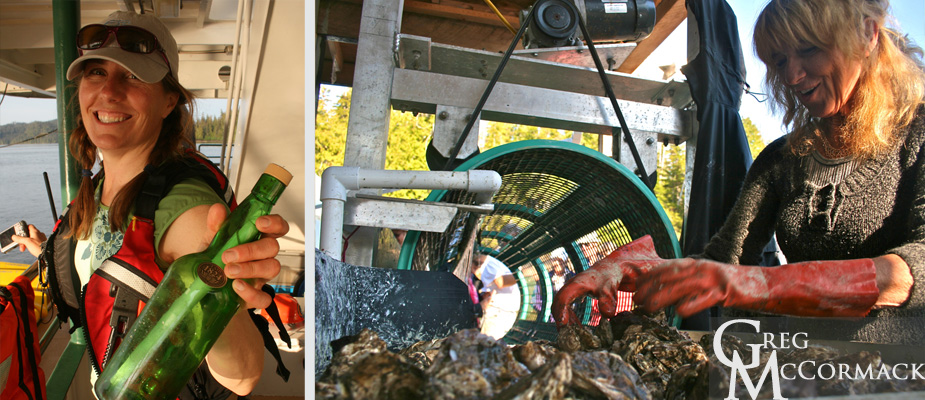
Laurie, one of our expedition guides, finds an MIB, or a “message in a bottle” floating in the sea on her afternoon kayak. She is very excited to read the note that offers a free cup of coffee in the town of Craig, just a few miles away from Klawock. We calculated that the bottle had been at sea for two weeks and covered less than 20 miles!


